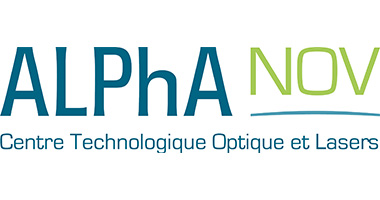LARA Project - LAser Robotic Applications
The project aims to combine two technologies that have had a major impact on the medical field: robotics and lasers.
The context
Maxillofacial surgery is the specialty that relates to the cranio-maxillofacial sphere: traumatological, carcinological and malformative pathologies of the face but also reconstructive surgery, in particular flap surgery and microsurgery. Maxillofacial surgery ensures the diagnosis and treatment of these pathologies according to an aesthetic and/or functional approach.
The surgery consists of making cuts in the bone (osteotomies), moving the fragments forward or backward (mandible and/or maxilla) and affixing them to the desired final location using plates or prostheses.
Scientific and technological advances in medicine have made it possible to considerably improve practices in maxillofacial surgery, thus making it possible to reduce morbidity rates, improve treatments and reduce postoperative follow-up stages.
The pre-operative stage allows the surgeon to plan the cuts and movements that will be made. Using radiological images of the patient, practitioners can therefore define in space the different cutting planes and determine the parameters leading to optimal facial reconstruction. Over the past few decades, researchers have focused their efforts on improving pre-operative planning as it plays a vital role in the success rate of surgical procedures.
Today, research goes beyond pre-operative planning and is increasingly directed toward the surgical procedures themselves. The aim of minimally invasive approaches and the reduction to a minimum of operating time is to reduce surgical complications, reduce postoperative pain and enable rapid recovery of patients.
It is in this context that the LARA project is presented, to enable complex surgical procedures to be performed with increased precision while reducing complications and discomfort for patients and practitioners.
Complementary technologies
Over the past decade, these two technologies when used independently have not just profoundly impacted medical practices but also the patient journey. They have made it possible, with other technologies, to open the door to precision medicine where the patient's health journey has been digitized and automated from screening and diagnosis to treatment and follow-up. The objective pursued in this R&D program is providing a new high-performance tool that combines robotics and lasers for maxillofacial surgery bone cutting.
In this way the project will facilitate the production of a prototype that combines a femtosecond laser source optimized for bone cutting with a robotic arm and online positioning and monitoring systems. These will allow the surgeon to perform more precise, top-level procedures without contact, and will enable complex trajectories to be followed thus improving cutting quality and bone tissue regeneration as well as operational safety.
This prototype will, in its first stage, be tested on biological samples and then validated on cadavers in the University of Bordeaux anatomy laboratory.
Regional partners
This project, over 32 months, will involve a translational consortium made up of clinicians, academics and technological centers that bring together all the necessary skills to meet the technological and clinical challenges raised by this ambitious venture:
-ALPhANOV, a technology center specializing in photonics and lasers, will be in charge of developing the laser system and the bone cutting process using a femtosecond laser.
-The maxillofacial surgery department of Professor Claire Majoufre at the Bordeaux University Hospital is the project’s clinical partner. She will be in charge of defining the target application, the clinical protocol and the functional specifications of the system as well as the cadaver prototype validation.
-The CRITT Informatique will be responsible for the development of a 3D imaging system that will produce a digital model of the patient's skull and facilitate the pre and intraoperative planning of the surgical procedure.
- The PPrime laboratory, specialized in robotics, will be responsible for creating the system and the procedure for positioning the robotic arm during the surgical procedure.
-Tecnalia France, technology center, via its divisions specializing in robotics and medical imaging, will be in charge of developing the robotic system as well as the OCT online monitoring system for laser cuts.
Funding :





